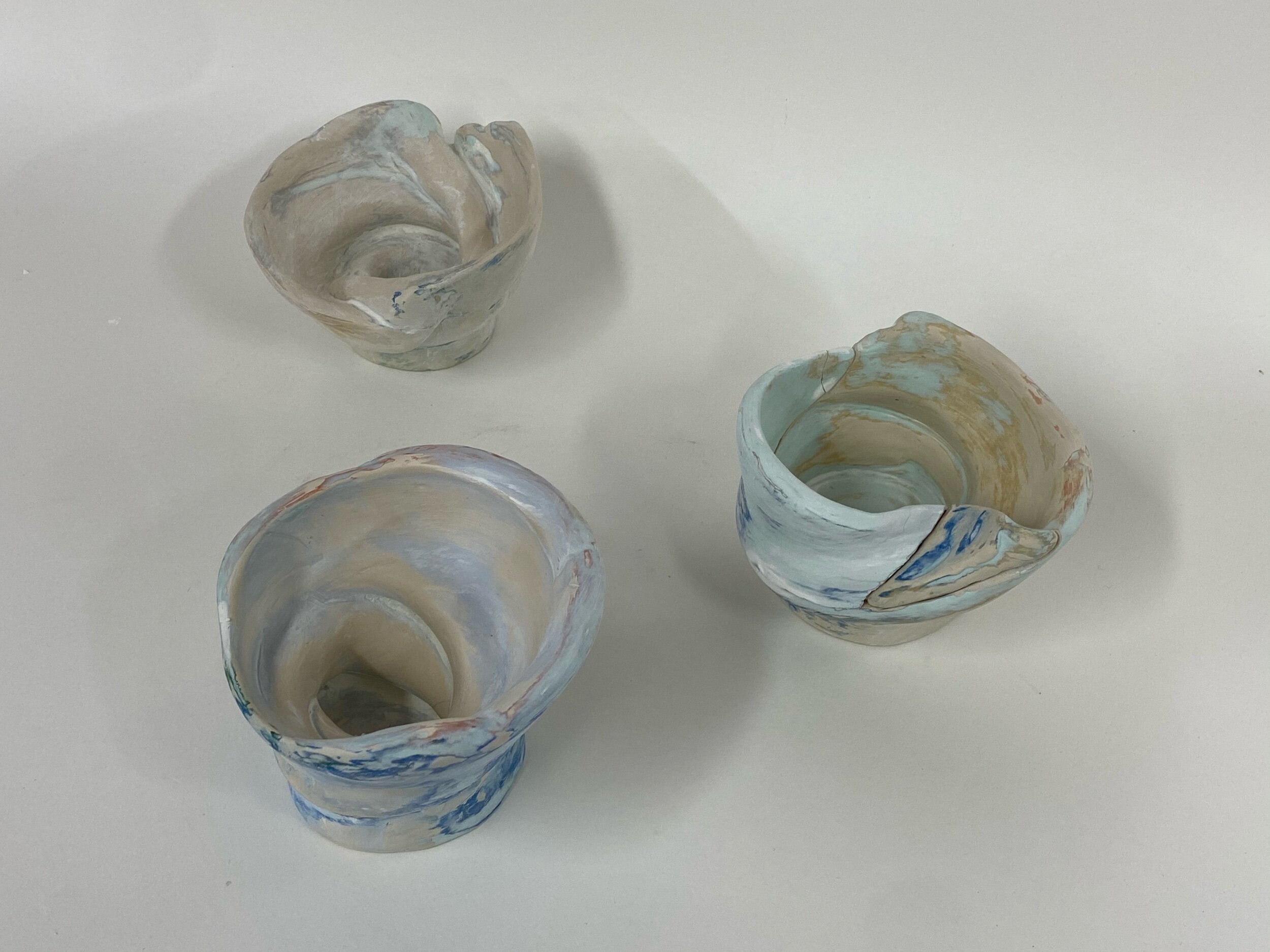Development: Bull in a China Shop
When your workshop technician states, “I forget to remind myself that, sometimes, Stuart doesn’t know what he is doing” (Reehal, 2021) I guess that’s indicative of a few things. Firstly, since using the ceramics workshop over the course of my degree, it’s hard to deny that I don’t consider it as part of my practice. Yet, so much of the work I have produced this year alone has been intrinsically linked to the process of working with ceramic bodies one way or another.
Secondly, In Fig. 1, the three pots are an example of absolute experiment in not only seeing what clay does, but also in what Stuart does. As well as trying to create the same pot I made some weeks back, I’ve been eager and impatient to recreate that moment. On Friday I spent the day casting new pots. Firstly, I’m trying to do something very specific, create an accident.
Fig. 1, Three pots made in ceramics.
Having made 3 pots on friday, of porcelain, I started to paint them this morning. Fig. 2.
I was really eager to catch the loading of the kiln, so “my pots” would be in there! That it was then I found myself just rushing ahead towards a massive mistake.
Fig. 2 Pots of underglaze I have picked out to use in my ongoing investigation as to how I achieved the first firing two week ago.
Fig. 3, Ceramic paints and a pot on the bench.
Also, not really having an understanding what is was that I was working with, this time porcelain, I was in such a hurry to produce a “great work of art”, that I completely forgot that you can’t just do any old thing in the process of making a pot.
Certain glazes can’t adhere to certain bodies (the reference used for clay). And also, bodies have to be fired under varying conditions. Including different temperatures for differing bodies of clay.
What I didn’t realise about porcelain was that it fires at a very high temperature, 1280 degrees Celsius, so in Fig. 3-4 I could very well apply underglaze, but not a finishing glaze.
Plus, this wasn’t what I did last time, and the whole point was to replicate the process.
My arbitrary approach just goes to show my capricious nature when an idea takes hold. My passion and eagerness to create can lead to as many problems as it does successes!
Fig. 4, How the pre fired pot looks with the underglaze applied.
Fig. 5, A broken pot. All because I tried painting before firing.
Whilst trying to cast, and as I have mentioned before, there is a moment when the process goes from being an emergent pot of some nondescript type to being a failure, as a pot that is!
It is in this moment, just as the collapse of the body on the wheel starts to happen that I’m interested in. The moment of entropy I call it. The random act of breakdown, albeit not over a slow period (and regardless of having nothing to do with Thermodynamics!).
Earlier in the year I found myself committed to the making of ceramic hoods. (Fig. 6) There have been so many discussions generated by them. Many of these conversations, including peers, technicians and academic staff, have covered such issues as display, queried the many and varied qualities contained within the objects as “things in themselves”, yet, not discounting the semiotic elements and specific givenness within the objects as emergent things, as well taking on and adopting certain symbols of either urban-ness or some absent human allure.
Fig. 6 Ceramic Hoods as displayed in the Calcutta Annex Basement Space.





